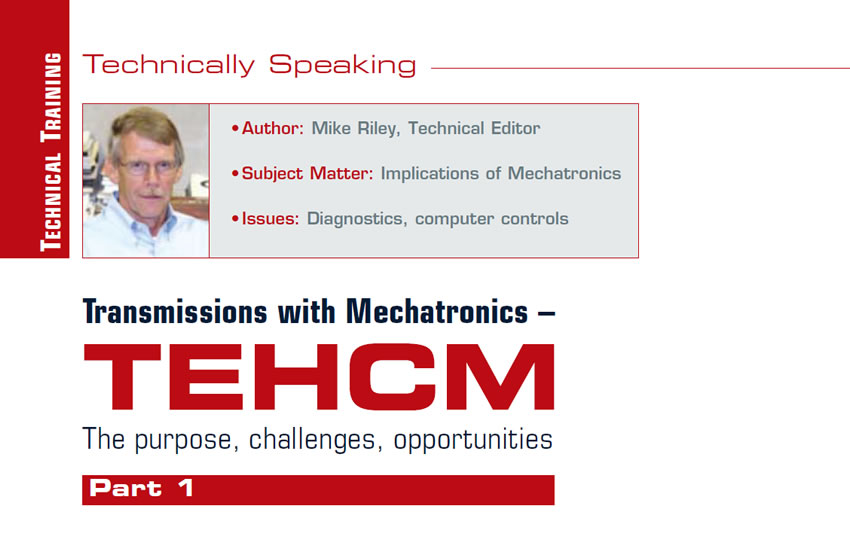Vacuum Testing GM 6T70, 6T75
From the TASC Force we reprint a series of in-depth test instructions for checking the serviceability of valve bodies.

How did that happen?
One of the keys to being successful in any repair is to do a thorough root-cause failure analysis on every unit you work on. Many seemingly unexplainable failures occur due to problems that are outside of the area you are looking at. By now every tech should know that components outside of the unit can create a failure. Failures recurring inside the unit mean that the part or parts that failed were influenced by other parts that were missed during the teardown and inspection of the unit. These are expensive mistakes as a problem that comes back under warranty is on the shop and undermines your customer’s faith in the organization. The examples we will look at in this article will highlight the importance of a careful total vehicle inspection before providing the customer an estimate. Once the customer hears what they believe to be the final number, that number becomes carved in stone, and it’s almost impossible to overcome if there are additional parts or labor required.
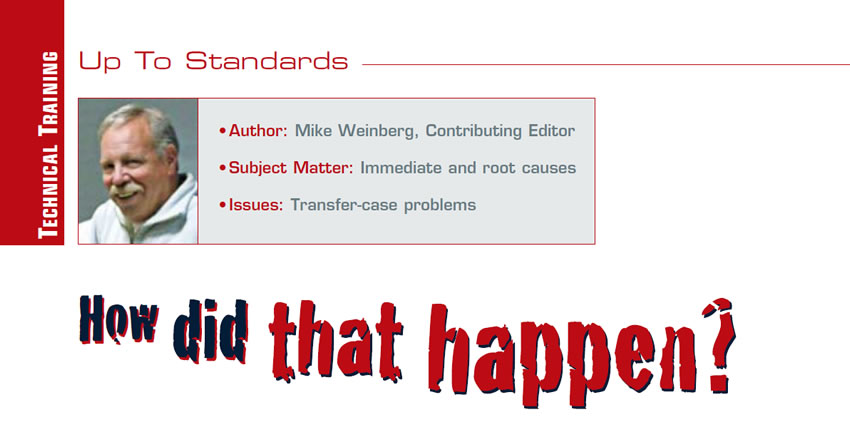
June 2015 Issue
In This Issue
BMW Driveline Noise Issue
6L80 Component Upgrades (It May Involve More Than One)
Filter Design Changes
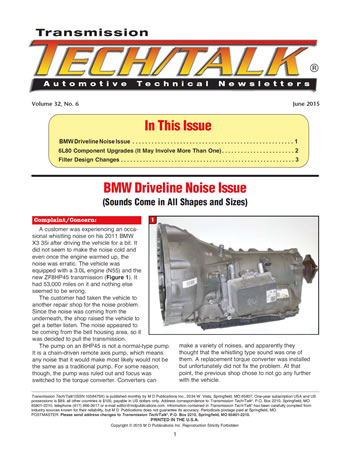
Transmissions with Mechatronics – TEHCM
Beyond the issues of handheld tester capabilities relating to mechatronics is the current status of dynos and valve-body testers. On a dyno, the complete transmission is tested using the required software, as it is with a valve-body tester. The VB tester, however, has the additional challenge of a base plate that the valve-body bolts to.
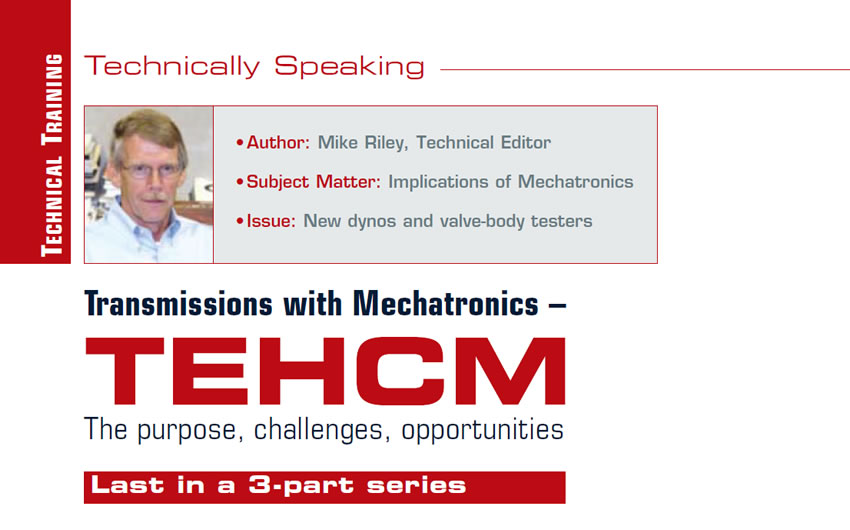
Vacuum Testing 6T40, 6T45, 6T50
From the TASC Force we reprint a series of in-depth test instructions for checking the serviceability of valve bodies.

Recent Diagnostic Trends
Sales of 4L60E units that incorporate the input speed sensor (ISS) are on the rise. Because of the increased sales, we are seeing more claims and problems with the sensors used in these units. Codes P0716 (ISS performance) and P0717 (ISS circuit low voltage) seem to be the key troublemakers.
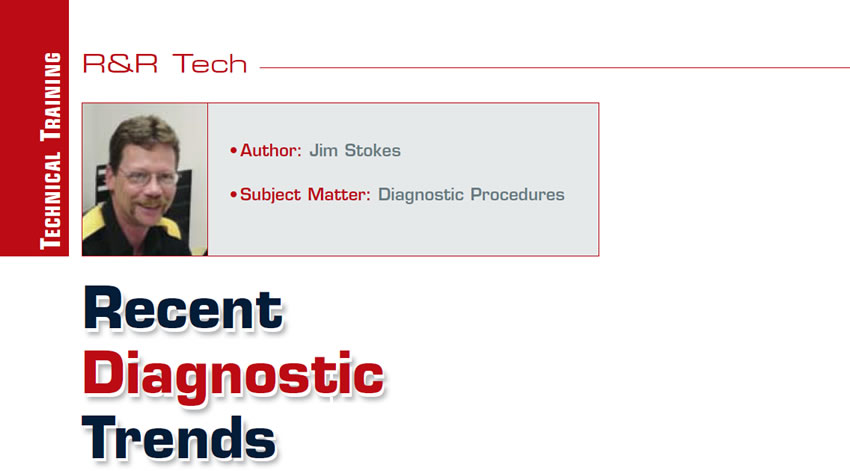
May 2015 Issue
In This Issue
Subaru Lineartronic lockup glitch
Ford CFT30 noise issue
Ford 4R75E speedo fade
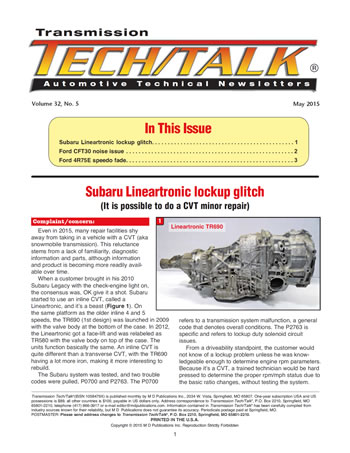
Transmissions with Mechatronics – TEHCM: Part II
In addition to dealing with the transmission evolutionary variables mentioned in Part I of the series, the transmission repair industry must contend with much more currently, as well as future changes that will occur.
Despite the efforts of organizations like SAE (Society of Automotive Engineers), the OEM’s have failed to standardize certain aspects of vehicle operations. Several different protocols exist that the OEMs use for OBD-II compliance. For a period of time, there were five basic protocols used by most OEMs to control their vehicles. Today there are a lot of different protocols to control an array of components from powertrain to airbags to audio/visual.
Diagnostics, testing equipment and repair will vary based upon the system, which is why it’s important to know what a particular scanner can accommodate.
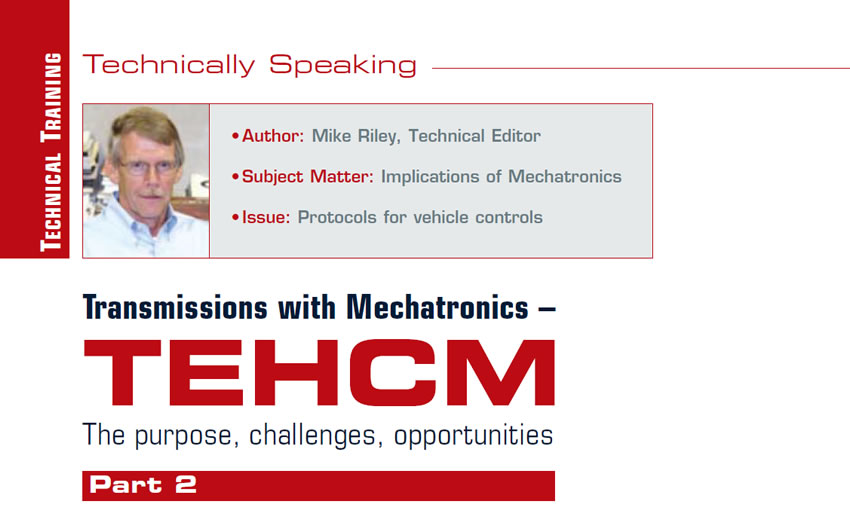
April 2015 Issue
In This Issue
Lexus A761E Short Term CB
BMW Transfer Case Repair
Focus Shifting Issues
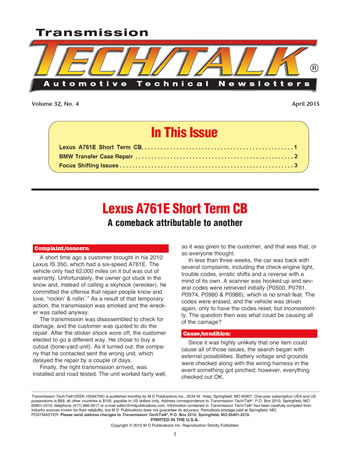
Snow plowing = BW 44-44 transfer-case failures
Experience we gain from solving problems generated in the transmission repair industry sheds light on various common failures and allows us to see trends that provide new products to solve design issues.
From 2011 on, Dodge has offered Ram 1500 pickup trucks equipped with the BW 44-44 transfer case. The 44-44 transfer case is a computer controlled “active” full-time transfer case.
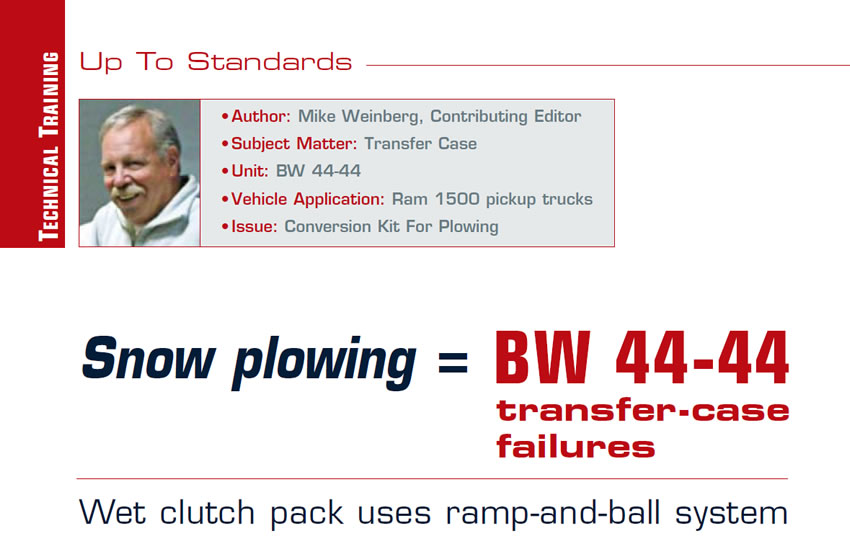
Adapt & Overcome
The TCM is responsible for monitoring and controlling transmission operation through the use of various sensors, solenoids, relays, switches, etc. Computer management provides benefits such as precise shift timing, fault detection and increased fuel economy. But a more remarkable feature is the TCM’s ability to compensate for changes in engine performance, vehicle load, driving patterns and physical wear inside the transmission by adapting its control tactics.
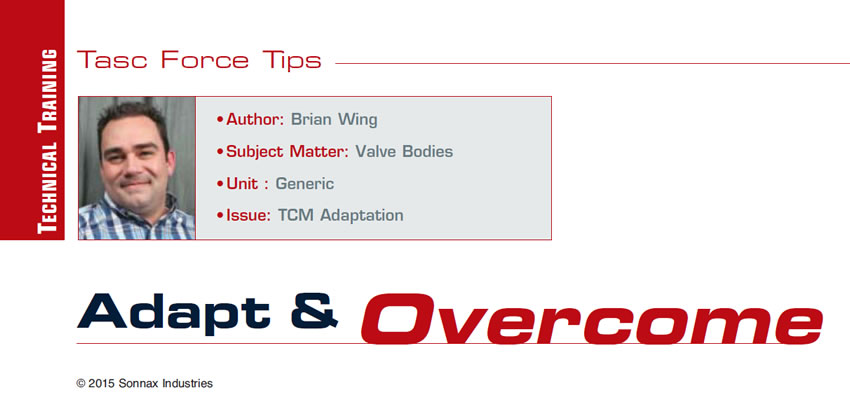
Transmissions with Mechatronics – TEHCM
For decades, the transmission repair industry has dealt with unending changes, ranging from weight (cast iron versus aluminum cases/components), fluids (natural versus synthetic blends) and sealing components to unit controls/calibrations.
Due to the ’70s oil fiascoes, the push for more gears, lighter units, less torque converter slippage, etc., all to enhance vehicle fuel economy and engine performance, has been growing exponentially over time. Add in a multitude of OE manufacturers and transmission designs, and the aftermarket repair industry has been faced with overcoming various obstacles just to repair a transmission.
